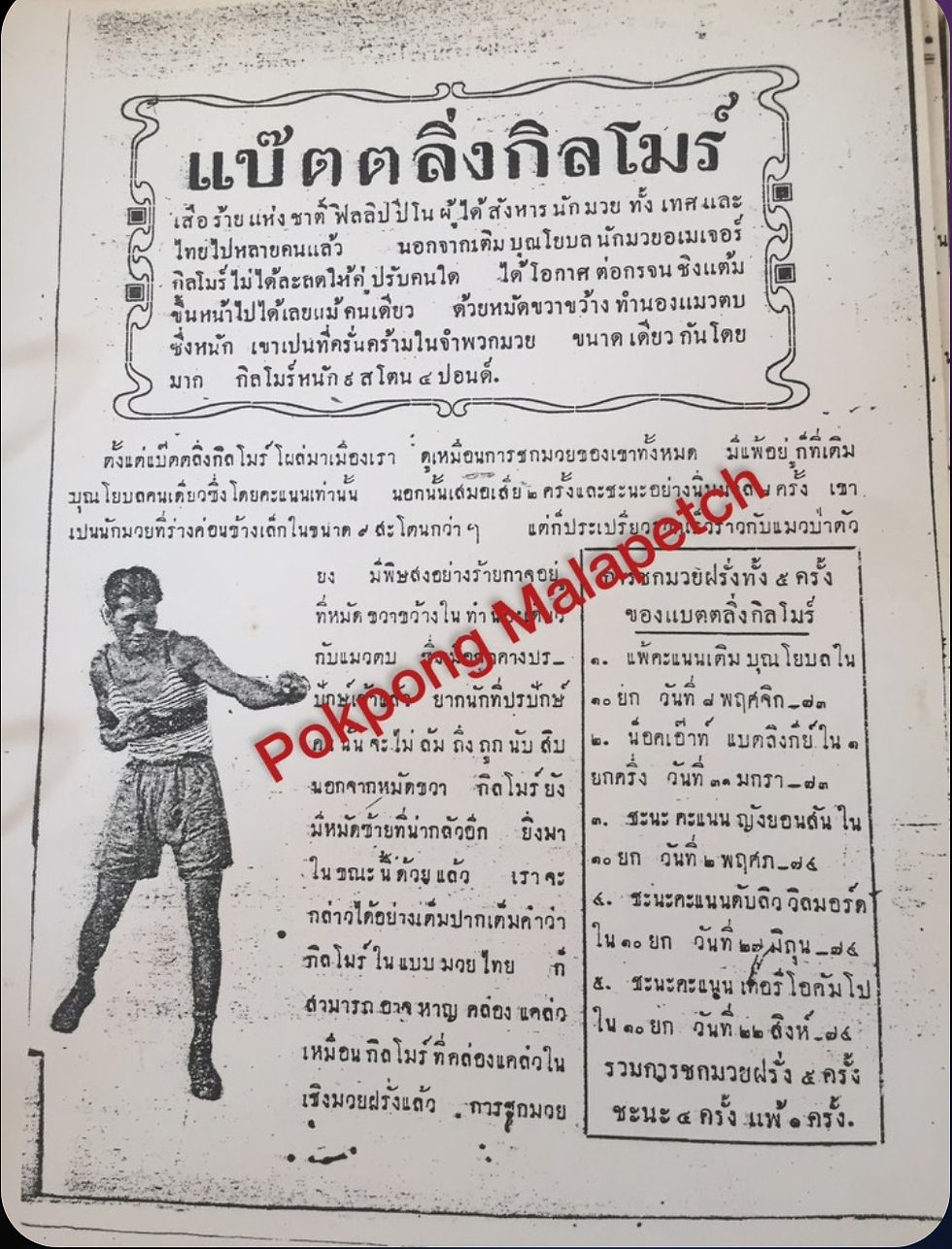In 1912 His Majesty Wiboon Sawatdiwong Sawatdikul formally imported Western Boxing after studying it abroad. In 1913 it was added to the curriculum of the Suan Kulap School, and in 1919 it was taught together with Muay as a single art, beginning the assimilation of punches and tactics of Western Boxing (Thai: Muay Sakon) in Thai Boxing. With Western Boxing, scientific training, and equipment like speed bags and heavy bags were introduced.

Another important figure in this process was Grandmaster Kim Seng Taweesit who studied Western Boxing in Singapore and taught it to his students, who were all successful fighters.

A further influence was the Thai translation of Jimmy Wilde's book "The Art of Boxing" (1923), published by a member of the Thai Army. Due to his small stature and weight, Jimmy Wilde's strategy consisted of always staying on the toes and moving the body, evading strikes, utilizing the Jab to disrupt and keep the opponent guessing, and launching the right hand when the opportunity was right. His strategy was probably more suited and admired by Thai fighters (most of whom were close to Wilde's height and weight) than other Western boxing strategies that required more physical prowess, particularly from heavyweights.

The Filipino prodigy Francisco "Pancho Villa" Guilledo defeated Jimmy Wilde in 1923, using a similar fighting style. Francisco Guilledo became Asia's first World Flyweight Champion, inspiring many Asian Boxers.

After the introduction of gloves in 1929, a Filipino boxer named Battling Gilmore changed Muay Boran and Muay Thai forever. He studied and competed in Western boxing and eventually moved to Thailand to compete. After having had much success in Western boxing competitions, he decided to switch to Muay.

Gilmore perfectly blended Western Boxing in the style of Wilde and Pancho Villa with Muay; he danced in, out, and around his opponent with the agile Boxing Footwork by hopping on his toes and constantly attacking with the Jab to damage and break his opponent's rhythm, while dodging attacks by moving the head and torso. Gilmore was a precursor of the fighting style that characterizes golden age Muay Thai legends who also found success in Western boxing such as Samart Payakaroon and Somrak Khamsing (although other Thai fighters before them exhibited this strategy after Gilmore.) At that time Thai fighters mainly used the Yang Saam Khum step and shifts, they were therefore not used to Gilmore's western footwork and did not know how to counter the Jab (Thai: Mahd Yaeb), named Mahd Nu Tai Rao "Punch of the Rat Climbing the Clothesline", a quick punch with the lead hand (At that time in Muay only the Stiff Jab and Straight Lead were used).
Gilmore later opened a Muay Thai camp, his fighters caused chaos among the Thai fighters, one even suffered permanent eye injuries from the numerous Jabs they received. This prompted Bua Wat Im, the Grand Master of Muay Korat, to write a poem on how to counter Mahd Nu Tai Rao.
"Mahd Nu Tai Rao is a long stab and must be intercepted with a Teep (front kick) or a simple block (block only as much as necessary, without exaggerated movements)."
- Grand Master Bua Wat Im

Subsequently, the Thais skilfully adopted the strategies of Western Boxing, Footwork on the balls of the feet, and the Jab, which can still be found in the basics of sports Muay Thai. Saenchai is a clear example of this when from a solid position he begins to move gracefully on the balls of his feet and throws many jabs and feints.
While the Footwork of modern Western Boxing is indeed superior as a base, the Footwork of Muay Boran is still valid for many strategies. Khet Sriyapai, the Grand Master of Muay Chaiya, criticized the decline of Muay Boran strategies in sports Muay Thai stating that;
Muay Boran fighters did not stand still because taking such a position could cause "Muay" to become "Porridge" at any moment. (Note: The Grand Master wrote a pun that cannot be translated correctly because the Thai words "Boxing" and "Porridge/Dying" have almost identical spellings.) In Western boxing, footwork is important knowledge that will bring a boxer to his best. In Muay Thai it is the same, some steps are considered important; they can be used for defense and offense at the same time. The steps that are effective or successful are therefore necessary to learn instead of abandoning them as in the present, because if the steps were really useless, then Muay Thai would not have survived until now. Unfortunately, today's Thai boxing does not have an immortal footwork, they are fascinated by modifying it to make it resemble Western boxing moves because they are neglecting an important position which in ancient times was called "Yang Saam Khum".
- Khet Sriyapai


Comments